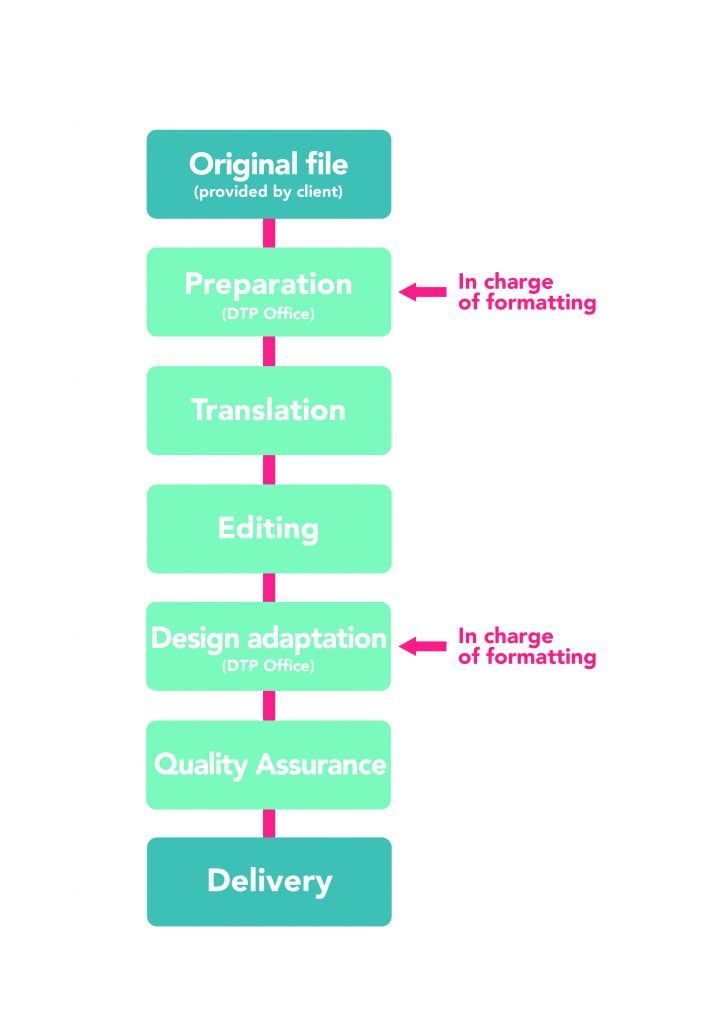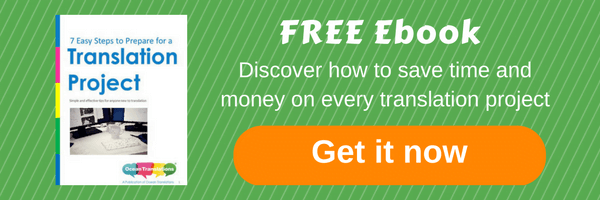Let’s say you need to translate a pamphlet into another language—Spanish, for example—because you want to offer your services to folks in another country.
This hypothetical graphic document was designed by a local professional. It’s several pages long and includes both text and images, and (let’s say) it details the medical services that your clinic offers.
Are you picturing it?
Good. Now, let’s say you get a translation agency to translate the text into your language of choice. But of course, the agency tells you that the job will include layout services (usually called Desktop Publishing or DTP in the translation industry).
The thing is, the leaflet you’re holding in your hand was designed in a certain way: it has a unique design, unique typography, line spacing and a number of graphics that take up space.
And here’s the kicker: when you translate into another language, the number of words can increase or decrease by about 30%.
That means that, without fail, you’ll need to adapt your formatting so that it mirrors the original.
In other words: besides translating the words, you’ll also need to mold the design so that the new text takes up the right amount of space. The goal is to make the text look neat and professional… and as close as possible to the original.
These adjustments are the responsibility of the graphic design professionals who make up the layout office.
THE ROLE OF LAYOUT IN A TRANSLATION PROJECT
- Everything begins when the client gets in touch with the language service provider because they need a translation.
- If the document will require adjustment on a design level, the agency tells the client that the final budget will include DTP services.
- The agency prepares the file to be translated. If the original files sent by the client were prepared in a desktop publishing program such as InDesign, the design team exports the text to a special translation software.
Why is that? Translators don’t use regular word processors.
They use special tools that speed up the translation process and enable them to translate with greater accuracy. Among other things, these applications utilize translation memories, which compile words, sentences, expressions and styles.
Suggested reading: “Translation Memories: Four Benefits for your Business”
- Next, the project is assigned to a translator and an editor, who work with the text.
- The DTP Office receives the text after it has been translated and edited, and begins to work with the formatting. This process includes quality analysis to ensure excellence.
- The client receives the finished product. It is now ready to be digitally distributed or printed.
The flow chart below outlines the different phases that the file passes through, including those that involve formatting (DTP process):

As you can see, the design team isn’t just involved during the final stage of the project; it also participates at the outset, preparing the file before passing it to the translator.
The result is a perfectly formatted document. To achieve this, the team works with several tools that help faithfully reproduce the appearance of the original piece.
This software most commonly includes:
– Photoshop (image editing)
– InDesign (magazine and leaflet layout)
– Word
– PowerPoint
A KEY ELEMENT
If you’re going to want your brochure, flyer, presentation, business card, poster, advertising banner or e-book translated so your business can connect with the world, then you should know that the DTP Office will play a vital role in that process.
The design team’s involvement is more than necessary, since, in addition to adapting the translated document, they provide technical support at several stages.
Generally, agencies have professionals who are dedicated to this kind of work.
The idea is to give the client a file that’s ready for distribution.
The challenge is ensuring that your message effectively reaches its target so that your organization has a greater global impact.
In the end, that’s the whole idea.





